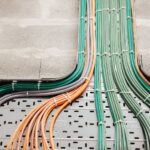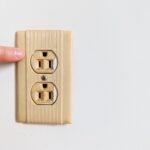With the rapid evolution of technology, smart homes promise a seamless living experience by connecting multiple devices through a central hub. Yet, the dream of a fully integrated smart home can quickly turn into a technological frustration when devices refuse to communicate effectively. Understanding the connection issues faced by smart home hubs is crucial for ensuring the smooth functioning of your networked devices and maintaining the convenience they promise.
- Navigating Challenges: Discover how issues like network disruptions or compatibility problems can impede your smart home setup.
- Spotting the Culprits: Learn about the common causes of integration problems, such as signal interference and old firmware.
- Solving Connection Troubles: Get practical advice on adjusting settings and confirming device compatibility to enhance integration.
- Advanced Troubleshooting: Explore deeper solutions, like examining router settings and using diagnostic tools to fix stubborn issues.
By diving into the specifics of these connection issues and their solutions, you’ll empower yourself to tackle integration problems head-on, ensuring your smart home’s reliability and ease of use. Keeping up with technology trends and regular maintenance can prevent future disruptions, elevating your smart home experience to new heights.
Understanding Smart Home Hub Connection Issues: Fixing Device Integration Problems
In the realm of smart homes, robust connectivity is vital for the harmonious operation of devices. However, smart home hubs often grapple with connection issues, which can impede their functionality. Understanding these challenges is the first step towards ensuring seamless integration.
Common issues such as network disruptions are often caused by excessive traffic or equipment malfunction. These disruptions can lead to delayed responses from connected devices, affecting their overall performance.
Another challenge is compatibility issues between the hub and various devices. Given the wide array of brands and models available, ensuring all components play nicely together is not always guaranteed. Compatibility problems can arise from differences in communication protocols or versions of device firmware.
Common Device Integration Problems and Their Causes
Diving deeper into the root causes of integration headaches reveals several prevalent culprits. Signal interference is a frequent offender, with physical barriers like walls or interference from other electronic devices disrupting communication.
Outdated firmware on either the hub or connected devices can also lead to integration issues. Manufacturers often release updates to improve compatibility or security, and neglecting these updates can result in mismatches between the hub and devices.
Lastly, inadequate network settings on routers or poorly configured security protocols can hinder the smooth integration of devices into the smart home network.
Addressing Smart Home Hub Connection Issues: Fixing Device Integration Problems
Ensuring that your smart home hub operates smoothly requires tackling common connection challenges with practical solutions. One of the first steps is to adjust your network settings. Start by checking if your router is positioned centrally in your home to provide optimal coverage. Avoid placing it near devices or structures that can cause signal interference, such as microwaves or thick walls.
Moreover, ensure that your smart home hub and connected devices are up-to-date. Outdated firmware can often be the root of connectivity issues. Regularly check for firmware updates from the manufacturers and apply them promptly to enhance performance and compatibility.
Another critical step is to verify device compatibility. Not all smart devices seamlessly integrate with every hub, so it’s essential to confirm compatibility before purchasing. Look for devices that are specifically marked as compatible with your smart hub to avoid integration problems.
By implementing these practical solutions, you can address connection issues effectively, ensuring a more reliable and functional smart home environment.
Advanced Troubleshooting Tips for Persistent Connection Problems
For those who continue to face persistent connection problems, delving into more advanced troubleshooting methods can be beneficial. Begin by checking your router configurations. Ensure that the router settings support all your smart devices, considering factors like SSID broadcast and security settings.
Utilizing diagnostic tools can also be invaluable. Many smart hubs offer built-in diagnostic features that can pinpoint connectivity issues. Make use of these tools to identify specific problems, such as network bottlenecks or device conflicts.
Additionally, consider a network analysis to understand traffic patterns and potential overloads. Adjusting bandwidth priorities for critical devices can help stabilize connections. If necessary, consult the technical support resources provided by your device manufacturers for more targeted advice.
By exploring these advanced methods, you can resolve even the most stubborn of smart home connection issues, paving the way for a seamless and integrated smart home experience.
Preventing Future Smart Home Hub Connection Issues: Fixing Device Integration Problems
Ensuring seamless integration of your smart home devices hinges on proactive preventive measures. Here are some strategies to mitigate connection problems and enhance your smart home experience:
Regular Software Updates: To maintain optimal performance and security, it’s essential to regularly update the firmware of your smart home hub and connected devices. Manufacturers often release updates that address bugs, improve compatibility, and enhance security features. Set up automatic updates where possible to ensure your devices are always running the latest software.
Optimal Device Placement: Strategic placement of your smart home hub and devices can significantly improve connectivity. Position your hub centrally within your home to evenly distribute the signal. Avoid placing it near walls or metal objects that can obstruct the wireless signal. Additionally, ensure your devices are within the recommended range of the hub to minimize connectivity disruptions.
Managing Network Traffic: A crowded Wi-Fi network can impact the performance of your smart devices. To alleviate this, consider setting up a separate network for your smart home devices. This separation can reduce network congestion and enhance connectivity. Also, regularly review and manage the devices connected to your network to maintain optimal performance.
Routine System Check-ups: Conduct regular check-ups on your smart home setup to identify and resolve potential issues before they become problems. Use diagnostic tools provided by manufacturers to assess the health of your smart home network. Keeping cables and connections clean and secure can also prevent unforeseen interruptions.
By implementing these proactive steps, you can significantly reduce the likelihood of encountering smart home hub connection issues. Staying ahead with regular maintenance and keen device management ensures a reliable and efficient smart home environment.
Smart Home Hub Connection FAQs
What causes smart home hub connection issues?
- Signal interference
- Outdated firmware
- Network disruptions
How can I resolve device compatibility problems?
- Ensure all devices are compatible with the hub
- Update to the latest firmware
What steps can I take to enhance signal strength?
- Reposition your hub closer to the router
- Reduce interference from other electronics
What advanced troubleshooting steps are available?
- Check router configurations
- Use diagnostic tools for network analysis
How can I prevent future connection issues?
- Regular software updates
- Optimal device placement





